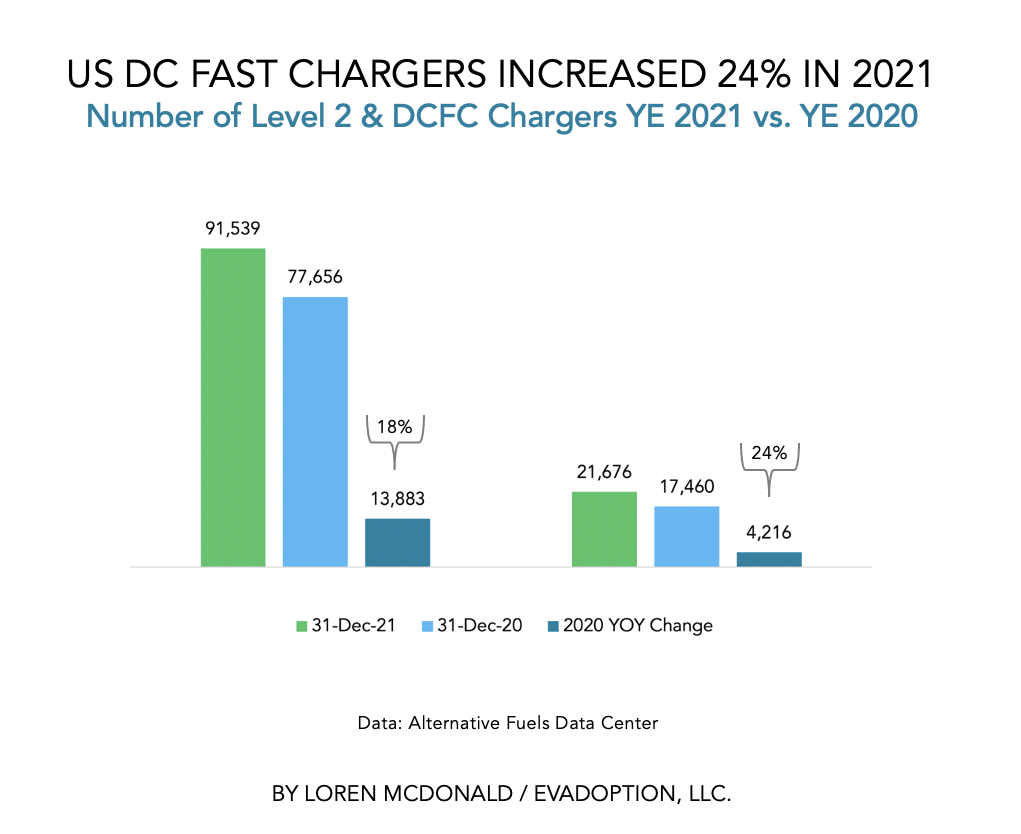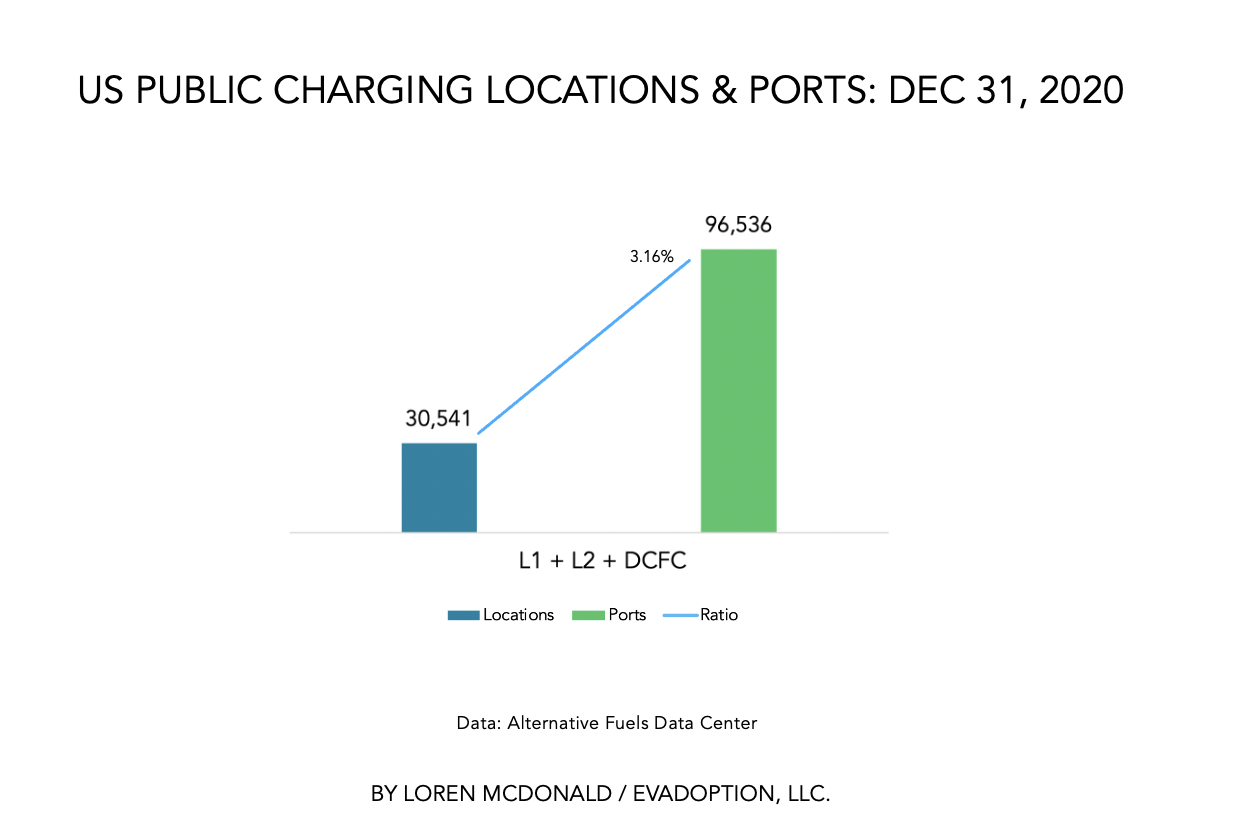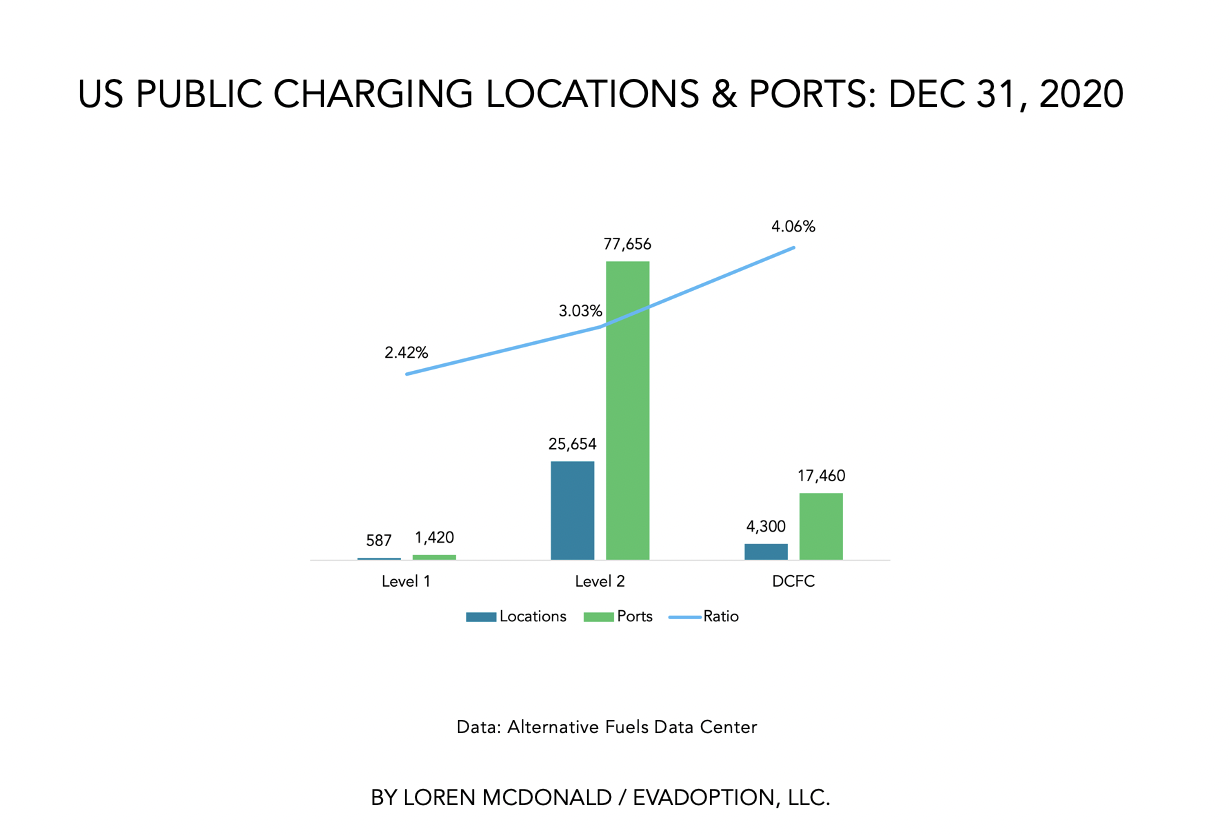In this section you will find various statistics on the number of US public charging stations, locations and and ranking of the US charging networks.

December 31, 2021
The number of DC fast chargers (ports) grew by more than 4,200, an increase of 24 percent at the end of 2021 versus year-end 2020, according to new EVAdoption, LLC analysis based on Alternative Fuels Data Center (AFDC) data.The 4,216 new DC fast chargers was well below the 13,883 Level 2 charger growth over the same period, however the number of Level 2 chargers with a much larger base grew at a lower rate of 18 percent. With $7.5 billion earmarked for three different EV charging infrastructure programs plus the DOE loan program and a doubling of new EV sales in the US, we expect even greater growth in 2022. The number of Level 2 chargers could grow to 105,000 to 110,000 and DC fast chargers to 27,000 to 30,000.
The major charging networks including Tesla Supercharger (DC fast charging) and Destination Charging (Level 2), Electrify America, EVgo, and ChargePoint will account for the bulk of the growth in 2022, however convenience store chains such as 7-Eleven and CircleK along with regional networks such as Francis Energy and EVRange will also help fuel growth especially of DC fast chargers.

